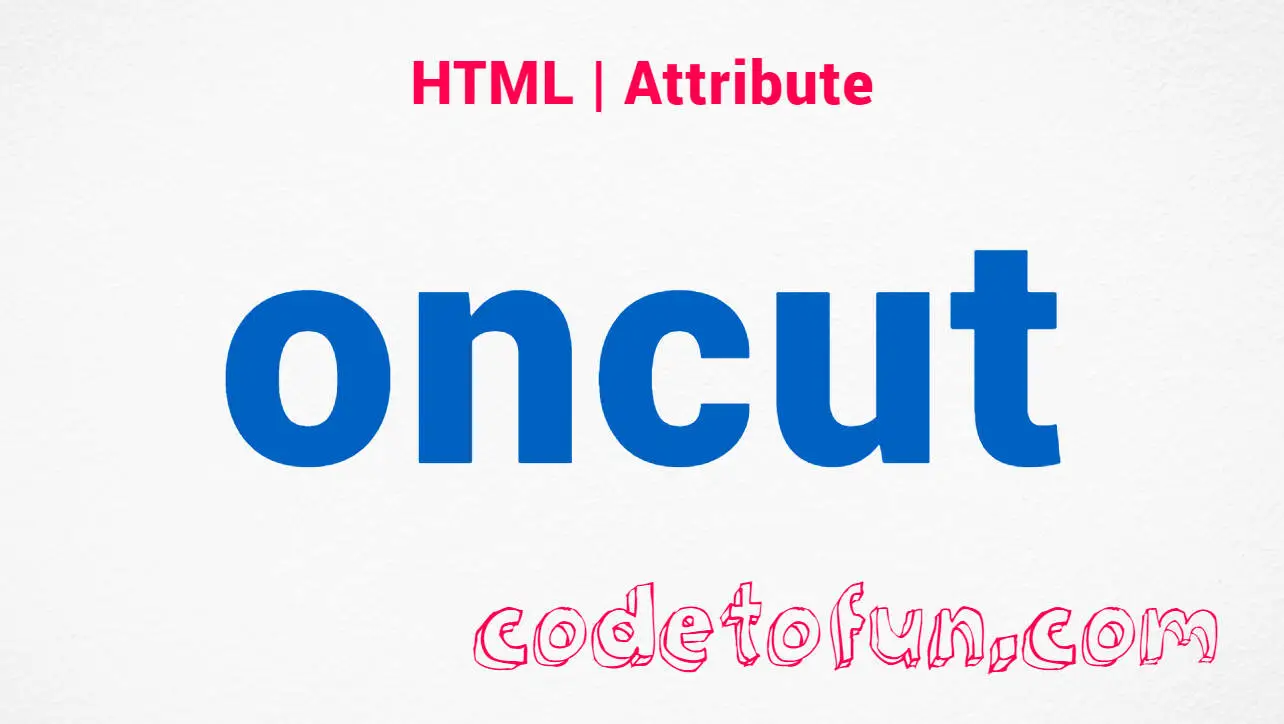
HTML Basic
HTML Reference
- HTML Tags
- HTML Deprecated Tags
- HTML Events
- HTML Attributes
- accept
- accept-charset
- accesskey
- action
- align
- alt
- as
- async
- autocomplete
- autofocus
- autoplay
- bgcolor
- border
- charset
- checked
- cite
- class
- color
- cols
- colspan
- content
- contenteditable
- controls
- coords
- data
- data-*
- datetime
- default
- defer
- dir
- dirname
- disabled
- download
- draggable
- enctype
- enterkeyhint
- for
- form
- formaction
- headers
- height
- hidden
- high
- href
- hreflang
- http-equiv
- id
- inert
- inputmode
- ismap
- kind
- label
- lang
- list
- loop
- low
- max
- maxlength
- media
- method
- min
- multiple
- muted
- name
- novalidate
- onabort
- onafterprint
- onbeforeprint
- onbeforeunload
- onblur
- oncanplay
- oncanplaythrough
- onchange
- onclick
- oncontextmenu
- oncopy
- oncuechange
- oncut
- ondblclick
- ondrag
- ondragend
- ondragenter
- ondragleave
- ondragover
- ondragstart
- ondrop
- ondurationchange
- onemptied
- onended
- onerror
- onfocus
- onhashchange
- oninput
- oninvalid
- onkeydown
- onkeypress
- onkeyup
- onload
- onloadeddata
- onloadedmetadata
- onloadstart
- onmousedown
- onmousemove
- onmouseout
- onmouseover
- onmouseup
- onmousewheel
- onoffline
- ononline
- onpagehide
- onpageshow
- onpaste
- onpause
- onplay
- onplaying
- onpopstate
- onprogress
- onratechange
- onreset
- onresize
- onscroll
- onsearch
- onseeked
- onseeking
- onselect
- onstalled
- onstorage
- onsubmit
- onsuspend
- ontimeupdate
- ontoggle
- onunload
- onvolumechange
- onwaiting
- onwheel
- open
- optimum
- pattern
- placeholder
- popover
- popovertarget
- popovertargetaction
- poster
- preload
- readonly
- rel
- required
- reversed
- rows
- rowspan
- sandbox
- scope
- selected
- shape
- size
- sizes
- span
- spellcheck
- src
- srcdoc
- srclang
- srcset
- start
- step
- style
- tabindex
- target
- title
- translate
- type
- usemap
- value
- width
- wrap
- HTML Global Attributes
- HTML Status Code
- HTML Language Code
- HTML Country Code
- HTML Charset
- MIME Types
HTML oncut Attribute

Photo Credit to CodeToFun
🙋 Introduction
The oncut attribute in HTML is a valuable tool that allows developers to define JavaScript code to be executed when the user cuts content within an editable element.
This attribute is commonly used in conjunction with contenteditable elements to trigger specific actions when the user cuts text or other content.
🎯 Purpose of oncut
The primary purpose of the oncut attribute is to provide a way for developers to respond to user actions involving cutting content within an editable element.
This can be useful for scenarios where you need to perform custom operations or validations when certain content is cut by the user.
💎 Values
The oncut attribute accepts a JavaScript code snippet or function name as its value.
📄 Example
Let's explore a simple example of using the oncut attribute in an editable div:
<div contenteditable="true" oncut="handleCut()">
Try cutting this text!
</div>
<script>
function handleCut() {
alert("Text cut! Check the console for custom operation details.");
}
</script>🧠 How it Works
In this example, an alert will be triggered when the user cuts the text within the editable div.
🔄 Dynamic Values with JavaScript
You can dynamically set the oncut attribute using JavaScript, allowing for greater flexibility and control over the behavior. Here's an example:
<div id="dynamicEditable" contenteditable="true">
Dynamic editable content. Cut me!
</div>
<script>
// Dynamically set oncut event handler
document.getElementById("dynamicEditable").oncut = function() {
console.log("Dynamic content cut! Executing custom logic...");
};
</script>🧠 How it Works
In this script, the oncut attribute is dynamically set for an element with the id dynamicEditable, and a corresponding JavaScript function is defined to handle the cut event.
🏆 Best Practices
- Use the
oncutattribute when you need to perform specific actions or validations in response to user-initiated cut operations within editable elements. - Keep the JavaScript code concise and focused on the intended functionality to maintain code readability and maintainability.
- Ensure that your code gracefully handles scenarios where the oncut event might not be supported by all browsers.
🎉 Conclusion
The oncut attribute provides a powerful mechanism for handling cut events within editable elements.
By understanding how to use this attribute and incorporating it into your web development projects, you can create more interactive and dynamic user experiences.
👨💻 Join our Community:
Author

For over eight years, I worked as a full-stack web developer. Now, I have chosen my profession as a full-time blogger at codetofun.com.
Buy me a coffee to make codetofun.com free for everyone.
Buy me a Coffee












If you have any doubts regarding this article (HTML oncut Attribute), please comment here. I will help you immediately.